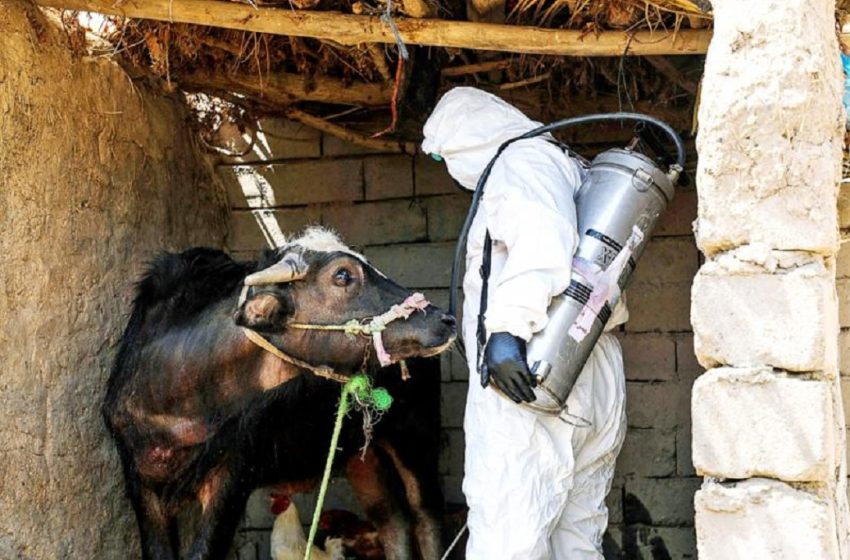Hemorrhagic fever infections in Iraq rise to 377

A worker disinfects calves at a small farm Iraq. Photo: AFP
Baghdad (IraqiNews.com) – A new outbreak of hemorrhagic fever in Iraq, endangering public health and livestock, triggered the government to hold continuous meetings of a committee that included local and foreign experts in an attempt to contain the disease after the number of infections rose to 377 cases.
A statement issued by the Ministry of Health mentioned that Health Minister Saleh Mahdi Al-Hasnawi chaired a meeting of a national committee for hemorrhagic fever control, in which officials from several Iraqi ministries and the National Security Agency, as well as a representative of the World Health Organization (WHO), attended, according to the Iraqi News Agency (INA).
During the meeting, Al-Hasnawi talked about collective action to control the infected people, raise community awareness, and prevent cattle slaughter outside slaughterhouses, as mentioned in the statement.
The statement revealed that 377 infections have been recorded in the country, indicating that the recorded deaths represent 14 percent.
The spokesperson of the Ministry of Health stated previously that 212 infections were recorded in 2022, including 27 deaths.
Hemorrhagic fever is transmitted to humans from ticks and livestock and is transmitted from one person to another through direct contact with the infected person’s blood, secretions, organs, or other body fluids.
The symptoms of the disease, whose death rate may reach 40 percent, include fever, muscle aches, dizziness, neck pain, stiffness, back pain, headache, sore eyes and sensitivity to light.
Patients with hemorrhagic fever may experience a deterioration in kidney function or sudden liver or lung failure.
Hemorrhagic fever is a life-threatening infectious disease, as it can cause damage to the walls of small blood vessels, resulting in bleeding with the possibility of impairing the ability of the blood to clot.
